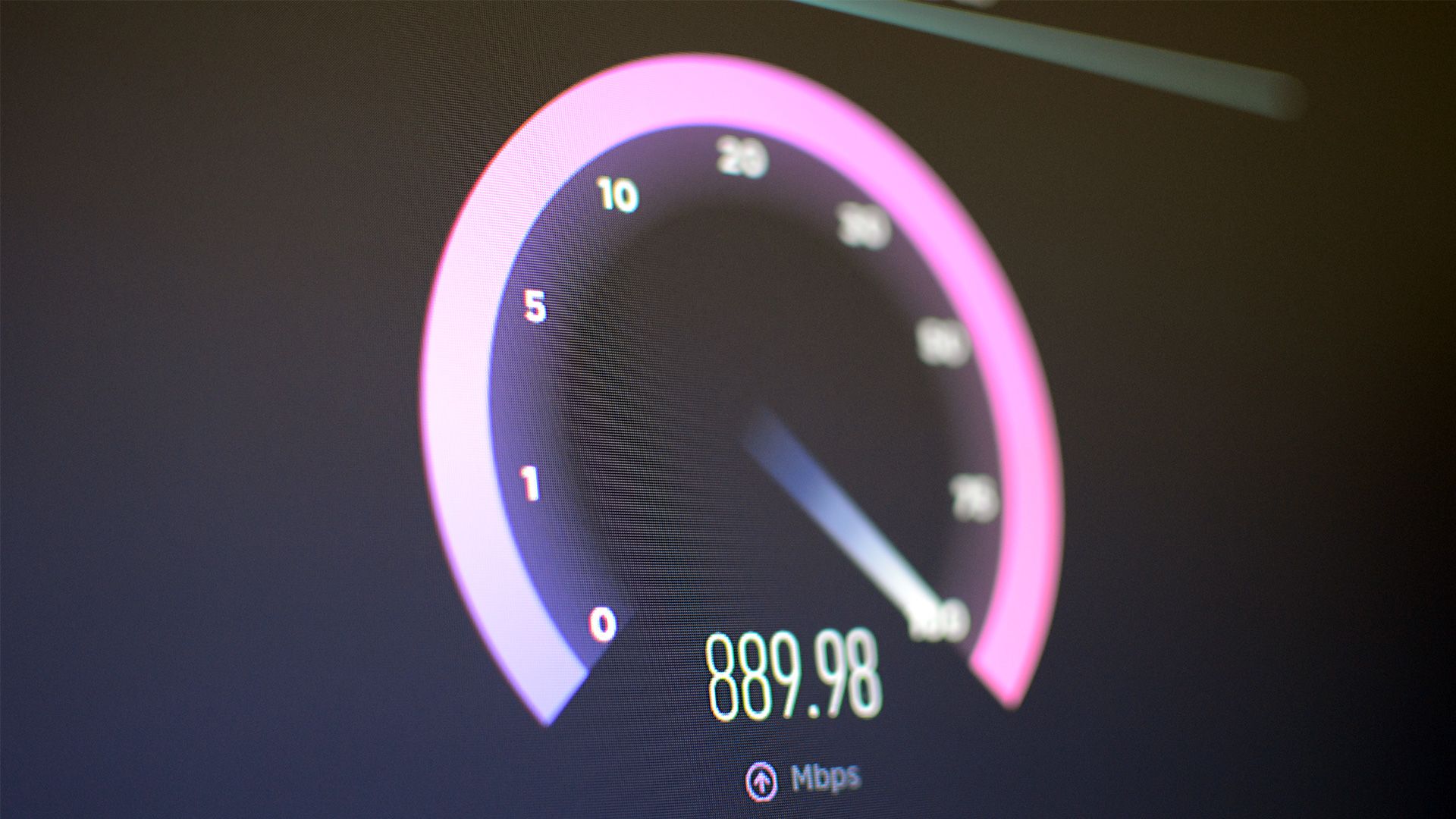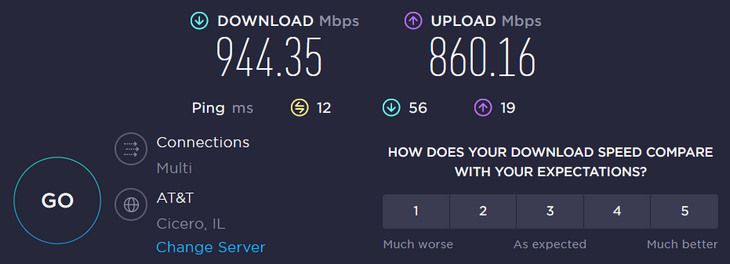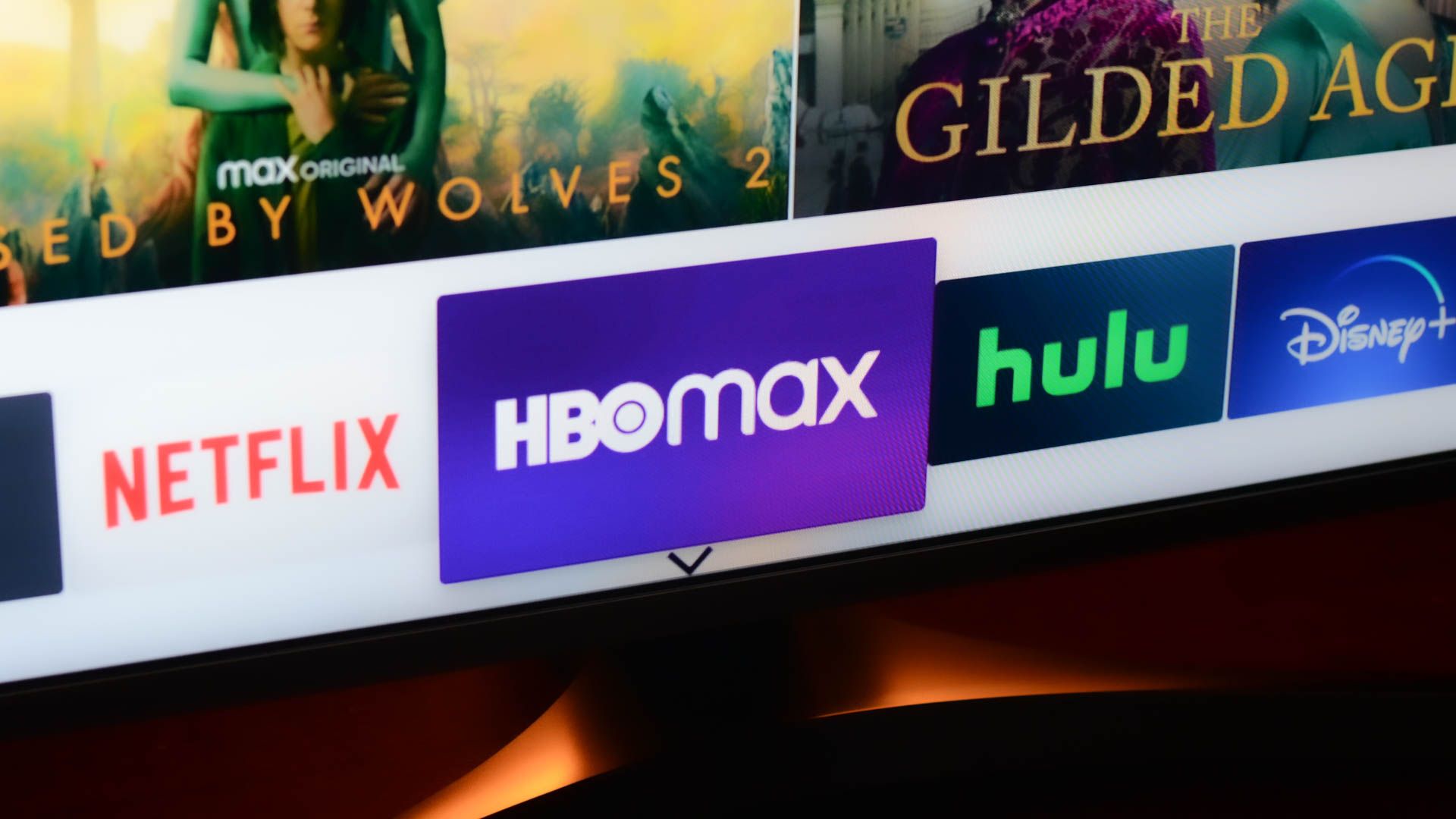Quick Links
Key Takeaways
Before paying extra to upgrade to a higher internet plan, you should take stock of your current internet plan, the needs of your household, and the age of your Wi-Fi router.
Your Internet Service Provider (ISP) would love it if you paid more for a faster internet connection, but do you really need to upgrade? Here's what you need to know about internet speed and when it's worth upgrading.
First, Assess Your Current Internet Package and Needs
It's really easy to get caught up in the idea that you need to upgrade your internet. But before you call up your ISP and switch to a more expensive package or switch ISPs entirely, you should take stock of your current connection and what you use it for.
How Fast Is Your Internet Connection Now?
There are two things to look at when you're checking your connection speed: what speed you pay for and what speed you're actually getting.
Check Your Internet Plan Tier
The first portion is pretty straightforward. Check your bill or log into your ISP's web portal to check your account and confirm the plan you're on. If your ISP doesn't list the actual upload and download speeds but uses designations like "Basic," "Ultra," and "Ultimate," or similar terms, you'll need to do a little digging on their site to determine what that entails.
Spectrum's "Ultra" cable internet tier, for example, is advertised as up to 500 Mbps down/20 Mbps up. AT&T uses more direct name schemes: the "Internet 500" plan is up to 500 Mbps down/500 Mbps up. (If you're curious about the upload/download discrepancy, it's because cable-based ISPs usually offer asymmetric connections, and fiber providers offer symmetric connections with an upload speed equivalent to the download speed.)
Speed Test Your Connection
Speed tests aren't a perfect metric for how good your internet is, but they are a good simple test to ensure you're at least getting roughly what you pay for.
First things first, make sure you're conducting your speed test properly, or the results are worthless. If you run a speed test using your phone or a Wi-Fi-connected laptop, for example, you'll be testing your Wi-Fi as much as you'll be testing your internet connection.
Ideally, you run your speed test from a computer with an Ethernet port connected directly to the Wi-Fi router so there is nothing but a few feet of Ethernet cable between you and the greater internet---thus avoiding any Wi-Fi issues and bottlenecks. Be sure to run the test with a minimal network load (testing while streaming 4K video or downloading a huge file will throw the results off).
Some Wi-Fi routers have a tool to conduct a speed test directly on the router itself, which is worth looking into. And it's usually possible to contact your ISP and have them run a test, if you're using their modem and hardware, to check the speed. This is a great time to double-check you're actually getting the speeds you pay for.
How Many Active Users Are In Your Household?
At this point, we've checked your internet speed. Now take stock of the number of active internet users in your home. Note that we said active internet users and not simply the number of people. An infant that doesn't use the internet or an elderly relative with little interest in using the internet shouldn't factor into your considerations for upgrading or downgrading your internet plan.
But if you have a household with two adults and two teenagers, all of whom use the internet consistently on their phones, laptops, and devices like game consoles and smart TVs, then you should consider your base user number.
What Do You Use Your Internet Connection For?
There is a substantial difference in the kind of demand various activities put on an internet connection and how fast that internet connection needs to be to support them.
If you're living with six other roommates and everyone retreats to their separate rooms and living spaces to watch Netflix or HBO Go at the end of the day, you'll have much higher peak demand on your connection than a household where with a single smart TV the family watches together in the evening.
Keep in mind how many people are in your household and how you use the internet as we move into the next section to discuss how big of an internet package you really need.
How Much Internet Speed Do You Actually Need?
In an ideal world, whether you lived in a city high rise or a tiny Midwestern town, highspeed internet access would be so ubiquitous that having a gigabit fiber drop to your home was like having electricity and running water.
But, alas, at the moment, we don't live in a world of $10-a-month fiber internet, so it's worth assessing your needs to adjust your internet package to your budget. Why pay $90 monthly for gigabit fiber when your household would be fine with a $40 300 Mbps package? There are better ways to spend $600 a year than on something you're not benefitting from, after all.
You Need Way Less Download Speed Than You Think
If the ad copy from your local ISPs is to be believed, you need at least a gigabit connection to really enjoy the internet. And if you have any hope of being a true elite gamer, you should consider getting an even better package!
But the reality of day-to-day internet usage, even if you're an elite gamer, doesn't align with what the ISPS are selling. Your household requires a lot less download speed than you probably think.
General web browsing? You need around 3 Mbps of bandwidth. Streaming music? Only around 2 Mbps. Watching Instagram, TikTok, or YouTube videos? 5 Mbps for HD quality video. Same thing for watching HD-quality video on Netflix, HBO Max, Hulu, or any other streaming provider. Want to watch 4K streaming video? You only need around 15 Mbps.
By that measure, in a 4-person household where everyone wants to watch 4K videos simultaneously, you're chewing up around 60 Mbps of download bandwidth. On a gigabit connection that speed tests under real-world conditions at 940 Mbps, what exactly is that "leftover" 880 Mbps doing for anyone?
Outside of large sustained downloads, such as downloading a 60GB video game faster, not much. On a gigabit connection, that 60GB game download will take around 8.5 minutes. On a 300 Mbps package, it would take around 27 minutes.
But the ability to infrequently download large files faster doesn't translate to a better overall internet experience. Activities like browsing the web, scrolling on Instagram, or binge-watching a new show on Netflix have an upper threshold for their bandwidth demands.
Once you've met the minimum requirement for the activity (such as 15 Mbps or so per user watching 4K video), there is no improvement. Netflix isn't ten times better because your connection is ten times faster than the service's minimum streaming requirement.
As a general rule, it's a good idea to aim for around 25 Mbps per active internet user in your household if you want plenty of wiggle room for each person to enjoy all the streaming video, browsing, and goofing off on social media they can stand.
Upload Speed Is Too Often Overlooked
Historically, outside of power users, hardly anyone paid attention to upload speed. When broadband started rolling out, most people were just thrilled to load web pages faster and enjoy early streaming video services---download-centric activities. And in many households, to this day, upload speed isn't that important.
But things have changed a lot over the last twenty years, and homes are sending a lot more data to the internet than ever before. If you work from home, how fast you can upload files impacts your workflow. And upload speed has an impact on video conferencing, so if you don't want to be the person always dropping off the call or looking like they are glitching their way through The Matrix, you need sufficient upload speed.
Video conferencing takes around 1-4 Mbps, depending on the call quality. Similarly, live-streaming game content takes around 1-5 Mbps. Unlike download speed, where we were only focused on active users, don't forget to factor in cloud-based security cameras and similar devices. A cloud-based security camera with cloud-based backup needs around 1-4 Mbps.
In general, you should aim for at least 5 Mbps upload per active user in your household. That way, if everyone has to jump on Zoom for work or school, there is adequate bandwidth.
And if you have a slew of smart Wi-Fi security cameras constantly streaming to the cloud or you are constantly uploading large files to work (or backing up large personal files) you'll want more upload bandwidth. If you have never thought about how much bandwidth your smart security cameras use, don't feel bad---most people don't and then are surprised when their home internet doesn't handle the increased demand very well.
But that's largely only a concern for non-fiber internet connections. The symmetric nature of most fiber internet ensures that most people have enough upload bandwidth. Just like 300 Mbps download is more than enough for most households, that matching 300 Mbps upload is too.
If you have a cable-based ISP, however, you may find yourself stuck upgrading to the highest tier to get even fairly limited upload speeds. Spectrum, for example, has packages with up to gigabit download speeds in many markets, but even on their gigabit plan, the download speed is only around 35-40 Mbps.
Don't Overlook the Side Benefits of an Upgraded Internet Package
There is a final consideration independent of how much download or upload speed you need and whether or not a particular internet package tier is the best fit for you: the side benefits that come with bundles and upgrades.
If your internet provider bundles streaming services with their better packages (as AT&T used to do with HBO Max), you might not save anything at all by downgrading if you'd pay for that streaming service. And if downgrading your internet means you're no longer eligible for a bundle that includes a TV package you'd pay for anyway, there's no sense in paying $20 less a month for internet but $30 more a month for your TV package.
Some ISPs also make higher-level packages more enticing by waving away data caps, so be sure to read the fine print. Although you might be surprised at how much internet use it actually takes to blow through a 1TB data cap---you'd have to watch 11 hours of HD video per day to exceed the data cap by the end of the month.
Forget Upgrading Your Internet, Upgrade Your Router
A lot of folks will likely find this article because they are debating paying for a better tier of internet service through their local ISP or switching to a faster ISP altogether.
If you went through the self-assessment portion above and realized that the internet plan you have is underpowered for the demands of your household, there is no real way around that but getting a better plan or a new ISP. You can't magically make a basic 20/5 Mbps cable connection into a 100/100 Mbps fiber connection.
But when helping people with their home internet woes, we usually find that people have sufficient raw bandwidth for the needs of their household. Their problem isn't a lack of download and upload speed. Their problem is they're running ancient network hardware that is seriously hobbling both their internet speed and general home network experience.
It's why we recommend people upgrade their Wi-Fi router instead of upgrading to gigabit internet. In fact, we recommend people consistently upgrade their routers every 3-5 years, minimum, even if they don't have gigabit internet.
It's easy to focus on just your download speed as a measuring stick for good internet. But once you get past the basic have-enough bandwidth level, you should focus exclusively on your router. It's not the bandwidth determining how network resources are allocated, how good the Wi-Fi signal strength is across your home, or if your iPhone will properly fast roam between mesh network nodes. It's the Wi-Fi router.
If you slap a 2010-era router on a gigabit connection, you'll have a 2010-era Wi-Fi experience. You might not attribute your internet headaches to your router, but the signs your router is overdue for a replacement are clear.
So forget about paying hundreds of dollars every year for extra internet bandwidth you're likely not even fully taking advantage of. Instead, spend the money on getting a new modern Wi-Fi router.



